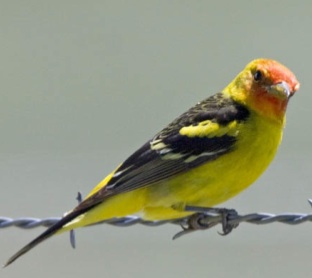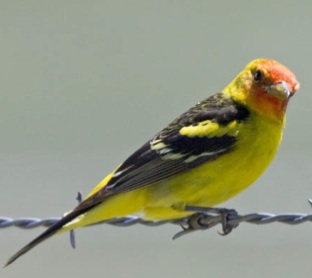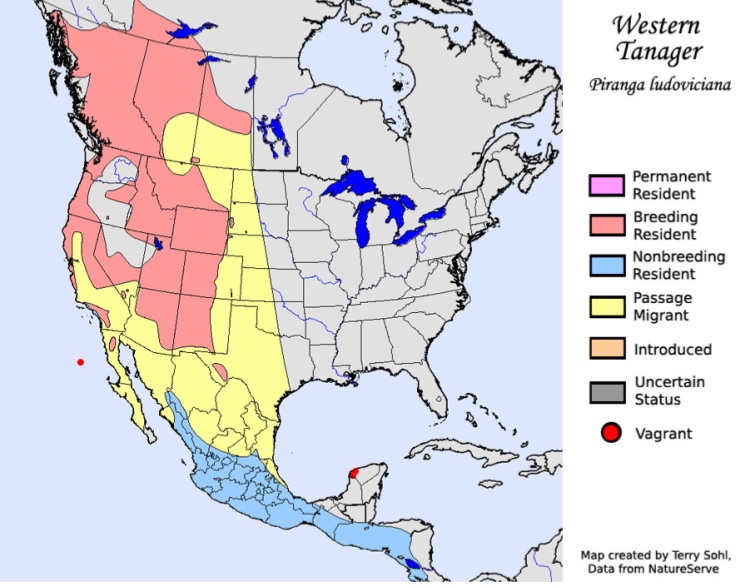[media id=13 width=320 height=240]
Ornithologists may have to revise their maps regarding the range of the Western Tanager a bright yellow bird that was rarely seen in northeast Nevada, until this year.
“They are very beautiful, but they weren’t too common out here until this year,” said Bob Walters Chief biologist of the Utah Department of Wildlife. “In Salt Lake we have had an invasion and there are definitely breeding in Wendover.”
The Western Tanager, Piranga ludoviciana, is a medium-sized American songbird. Formerly placed in the tanager family (Thraupidae), it and other members of its genus are now classified in the cardinal family (Cardinalidae).[1] The species’s plumage and vocalizations are similar to other members of the cardinal family.
Adults have pale stout pointed bills, yellow underparts and light wing bars. Adult males have a bright red face and a yellow nape, shoulder, and rump, with black upper back, wings, and tail; in non-breeding plumage the head has no more than a reddish cast and the body has an olive tinge. Females have a yellow head and are olive on the back, with dark wings and tail.
The song of disconnected short phrases suggests an American Robin’s but is hoarser and rather monotonous. The call is described as “pit-er-ick”.
Their breeding habitat is coniferous or mixed woods across western North America from the Mexico-U.S. border as far north as southern Alaska; thus they are the northernmost-breeding tanager. They build a flimsy cup nest on a horizontal tree branch, usually in a conifer. They lay four bluish-green eggs with brown spots.
Until this year the birds mostly just passed through northeast Nevada while migrating to their nesting grounds in the northern United States or Canada or their summer spots in Mexico.
“Partly because of the late spring some of them might have decided this was north enough,” Walters said.
Even without the cold temperatures conditions were ripe for the birds to make new homes in what was once not so prime real estate.
“Because of people and invasive grasses there is a lot more food available than there used to be.” Walters added. “The tanagers might make this permanent.”





